NeuroRegeneration Conference
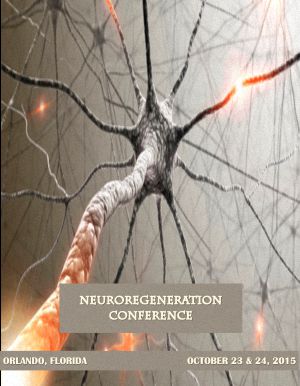 |
SPEAKERS & TOPICS
|
| |
 |
|
Title: What do we know about reversing neurodegenerative disease?
Objectives:
- Teach some of the main causes of chronic neuro-degenerative diseases
- Describe the evaluative tools helpful in identifying causes of disease
- Explain the integrative medicine therapeutic tools available to reverse neuro-degenerative diseases
|
Synopsis: In medical school most doctors were taught that the brain does not regenerate once damaged, especially in adults. However, several individuals presenting at this conference have personally seen marked recovery with an integrative treatment program in paralyzed patients years after a stroke or patients with advanced Amyotrophic Lateral Sclerosis or children with severe Cerebral Palsy, etc. Neuropasticity research has been demonstrating a recovery of human brain function with a variety of tools & techniques. Dr. Cowden will describe some the evaluative tools & therapeutic tools that are now available for assisting in the reversal of damaged or degenerated brain & spine.
|
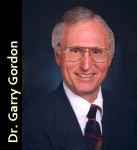 |
|
| Title: NeuroRegeneration is a reality: How do we make it happen?
Objectives:
|
Synopsis:
|
 |
|
Title: Reversing Neurodegenerative Diseases
Objectives:
- Open the practitioners mind to the possible infectious aspects to neurodegeneration
- Learn how to test for infections as well as toxins that may cause neurodegeneration.
- Learn valuable tools to reverse neurodenerative disease.
|
Synopsis: Incurable doesn't really mean incurable, it just means the doctor doesn't know why you have the symptoms you have. He doesn't get paid to determine why. His job is to characterize the symptoms to give a diagnosis. The fact is he doesn't have a clue, he is not trained to even think about such things. The truth is however that there is always a cause. The point of this presentation is to open the practitioners mind so that he or she may begin to look for the "causes" and surprizingly there are many. We hope to show what are the possiblilities and how to test for them or extrapolate from known circumstances to expose the "causes". It can be done. We hope to be able to guide practitioners to "think" in a detective fashion , seeking clues to solve the crime of degenerative diseases.
|
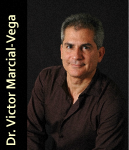 |
|
Title: The Use of Phospholipids and Electromagnetism in the Management of Neurological Disorders
Objectives:
- Understand the Causes of Most Neurological disorder
- Understand How to Remove Toxins from the Body
- Understand How to Regenerate Tissue Using Phospholipids and Electromagnetism
|
Synopsis: Neurological diseases such as autism and alzheimer’s disease have greatly increased in the last few decades. Autism used to affect 1 in 10,000 children in the eighties and this figure is as high as 1 in 30-40 children in Puerto Rico. Alzheimer’s used to be a relatively rare disease and it is now the fourth leading cause of death in Puerto Rico. These rapid increases are consistent with widespread global pollution and its effects on the nervous system. We will be discussing how the removal of contaminants from the human body and the regeneration of tissue can lead to a reversal of these neurological illnesses by a combination of intravenous phospholipids, methylcobalamin, glutathione, oral supplements and pulsed electromagnetic frequency and microcurrent devices.
|
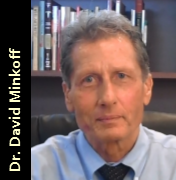 |
|
Title: Neurodegeneration: It’s Never Too Late
Objectives:
- How to pinpoint what is wrong.
- What diagnostics are the most helpful.
- What treatments work the best.
|
Synopsis: Many cases of even late stage neurological disease can be reversed if the clinician knows what to look for and what to do about it. This presentation will go through all the aspects of what to do and gives multiple case examples of how it is done and how much can be achieved.
|
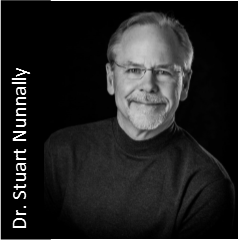 |
|
Title: The Role of Biological Dentistry in Reversing Neurodegenerative Diseases
Objectives:
- Be able to identify the main sources of dental neuro-toxins
- Be able to recommend protocols for safe detoxification
- Be able to have resources for recommending biological dentists
|
Synopsis: Health care providers have long been aware of the link between oral and systemic health. Weston Price, published an exhaustive 1,044 page, two volume treatise in 1923, which demonstrated the cause and effect relationship between dental toxicities and systemic disease. The broad array of anaerobic bacteria found in root canal treated teeth and in osteoneucratic lesions of the jawbone have been identified through DNA analysis. These anaerobes are associated with high levels of cytokines which are well known mediators of many auto immune diseases. Recent research has pointed to the link between periodontal disease and systemic illnesses which include brain, heart, lung and kidney disease. And even more disturbing, the American Dental Association continures t.o defend the use of mercury amalgam fillings, despite the volumes of scientific evidence which clearly demonstrate mercury to be a potent neurotoxin.This lecture identifies those areas of dentistry which are most associated with neurodegenerative diseases; and treatment protocols will be discussed, including the use of I.V. vitamin C therapy, ozone therapy, platelet and stem cell therapy.
|
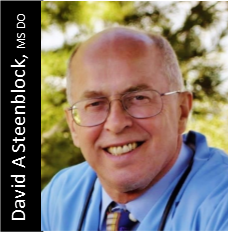 |
|
Title: Toxins are the Cause of Amyotrophic Lateral Sclerosis
Objectives:
- Explain how endotoxins, viruses, fungi, prions and toxic metals cause ALS symptoms.
- Explain the teatments that can reduce or eliminate these toxins.
- Explain the treatments that can repair and regenerate the damaged tissues.
|
Synopsis: ALS is caused by oxidative stress originating in the terminal ileum of most spontaneous ALS patients due to "Bad Bugs". The "Bad" bugs in the gut produce mucosal inflammation that attracts monocytes that are then poisoned by the Bad Bug toxins. The toxins from the Bad Bugs damage the monocyte's superoxide dismutase molecules so they become “MISFOLDED” and cannot be secreted from the monocytes. These poisoned monocytes then migrate via the blood into a break in the blood-cerebrospinal fluid barrier. About 80% of ALS patients have a chronically compressed spinal nerve called neuroforaminal stenosis which is where the break is. Stem cell therapy shuts off their toxic entry and helps to heal the damaged spinal nerve(s). This procedure begins to turn the disease around, often within hours to days. Our goal is to eliminate the gut inflammation, restore the blood-cerebrospinal fluid barrier, support the mitochondria, and repair the spinal nerves and motor neurons using a comprehensive treatment protocol.
|
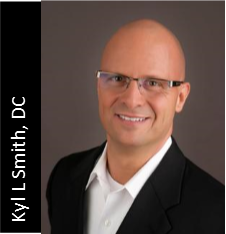 |
|
Title: Oxidative Stress and Cognitive Longevity
Objectives:
- Maintenance of antioxidant balance within the central nervous system can forestall cognitive decline and promote cognitive longevity.
- Certain nutrients exhibit strong antioxidant properties that reduce oxidative structural damage.
- A large body of scientific evidence describes the interactions among cognitive activity, oxidative stress, neurodegeneration, neuroprotection, cognitive aging, and retention of cognitive functioning ability.
|
Synopsis: With the Baby Boomer population at 80 million, one out of every three North Americans are now fifty years of age or older. Health Practitioners are recognizing mental fatigue and poor memory are common complaints of aging in their practices. Providing clinically effective wellness options represents an enormous service – involving as many as 10 Million people in the U.S. alone. Health Care Practitioners will gain knowledge of peer-reviewed research substantiating the benefits of specific nutrients shown to forestall cognitive decline, promote cognitive longevity, while improving memory, reasoning, information processing, mood, and mental performance in specific patient populations.
|
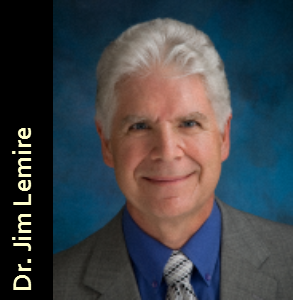 |
|
Title: Neuroregeneration: Begins in the Gut
Objectives:
- The gut is our second brain
- How to practically detoxify the gut
- How to repair and restore the gut
|
Synopsis: Neurological disorders are skyrocketing in our society - ADHD, debilitating anxiety, depression and even dementia. Medical revolution is underway that will forever change how we understand and treat not only behavioral and mood disorders but also chronic headaches, multiple sclerosis, Parkinson's disease, autism, Alzheimer's, and many more neurologic conditions. Research is showing us the links between gut microbiome, gut health, inflammation and both neurological & psychiatric diseases. We will learn new techniques how to practically detoxify the gut, repair the gut and develop a healthy microbiome in order to improve neuropsychiatric conditions.
|
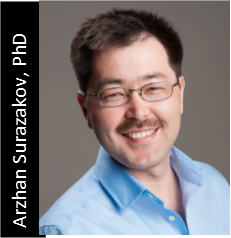 |
|
Title:Advancing Neuroregeneration with Coherent Low-Level Laser, LED, Magnetic Field and Ultrasound Therapy
Objectives:
- Share the latest advances in neural repair with low-level laser, LED, magnetic field and ultrasound
- Explain the concept of synergistic application of the four radiances
- Discuss practice and clinical experience of Coherent Multi-Radiances in neuroregeneration
|
Synopsis: Clinical research with low-level lasers, LEDs, magnetic fields and ultrasound is rapidly expanding in the field of neuroregeneration. Monotherapies with the noninvasive radiances have shown promise in treating retinal diseases, stroke, neurotrauma and neurodegenerative conditions because each radiance has its own distinct beneficial effect on stimulation of mitochondria, stem cell activation, immunity, normalization of autonomic nervous system and enhanced microcirculation. Dr Surazakov will discuss how we can integrate these advances in a synergistic application of Coherent Multi-Radiances and present clinical experience in eye diseases, neurotrauma and paediatric neurorehabilitation.
|
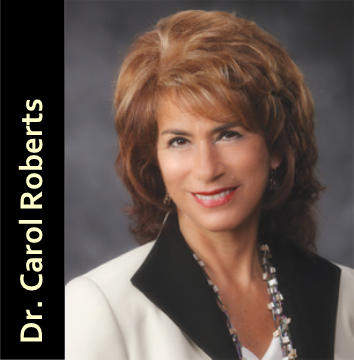 |
|
Title: Better Medicine for Best Brains
Objectives:
- Be aware of three neuro-damaging environmental influences and how to mitigate them
- Be able to teach your patients three self-care changes they can make to improve brain function
- Name three brain friendly interventions you can offer your patients.
|
Synopsis: Recent advances in scientific knowledge of what hurts and what helps brain function allow us to promote better brain health through a three-pronged approach, - modification of patient behavior and lifestyle, avoidance of neurotoxins, both environmental and medical, and to offer medical therapies that can halt and even reverse much of this damage. Information presented will allow you to implement strategies immediately and see results rapidly.
|
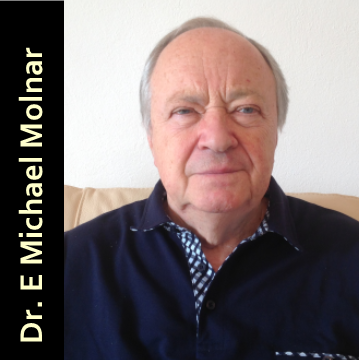 |
Title: Treatment of Incurable and No Longer Treatable Diseases of Central Nervous System by BCRO Fetal Cell Transplantation
Objectives:
- Learn that all incurable & untreatable diseases of CNS can be successfully treated by fetal cell transplantation (FCT), even of animal fetal origin, without any immunosuppression or other complications
- Learn that with the BCRO FCT treatment, the expected therapeutic effect is stoppage of further progression of the CNS disease rather than return to the pre-disease state
- Become aware that nearly all genetic diseases of childhood, prenatal infections of CNS, birth injuries of CNS, faulty development of newborns with low Apgar score, autism, etc., have been successfully treated with BCRO FCT & similar therapies in Germany & USSR
|
Synopsis: In late 1980’s, Mexico reported surgical neuro-transplantation for patients with incurable Parkinson’s disease. Then research in Sweden: success rate of neuro-transplantation in animals 95%; in human surgical FCT was 2 – 3% (banned in Germany). Research in Moscow by our International Institute of Biological Medicine launched in 1992, established the rules of clinical fetal cell neuro-transplantation. Clinical testing on over 100 patients in prolonged coma with no untoward reactions. Clinical effectiveness of intrathecal implantation of human fetal cell transplants, followed by animal fetal ones, was established, intraventricular and classical lumbar puncture, free of any complications, proved by patient autopsies. Success rate in untreatable Parkinson’s disease patients: 95% (Bulletin 1994). At First International Symposium in Moscow in 1995, over 400 cases of intrathecal/lumbar implantation of BCRO fetal cell transplants in patients with a variety of incurable neurodegenerative diseases were included in 6 different reports. The scientific basis of BCRO Fetal Cell Transplantation will be discussed.
|
 |
|
| Title: Gut/Brain Health, Tight Junctions, and a new Paradigm for Membrane Integrity and Cell-Cell communication
Objectives:
- Define a new science of gut/brain health
- Establish the relationship of our food environment to these critical barrier systems in our body
- Equip participants with practical methods to radically change patient health
|
| Synopsis: Zach Bush, MD demonstrates the unifying science behind the devastating changes in the food, farming and medical industries, and introduces the breakthrough science of bacteria and their communication with the body's defense systems. The industrial storm of the last 70 years has left the human gut and immune systems vulnerable to injury. Two synergistic toxins in our food and water systems have exploited this vulnerability, resulting in direct damage to the tight junctions that compose the natural firewalls at the gut/blood and blood/brain barriers. The correlations between diet, gut bacteria, and autism have been long-recognized. This new science finally delivers the mechanisms behind this relationship. The novel science of bacterial communication is the foundation for a new class of dietary supplements that goes beyond the probiotic, prebiotic and enzyme eras of gut supplementation. This science offers new avenues for ongoing grassroots changes to big industry to foster a healthy future.
|

 |
|
Title: Protocols for Brain Oxygenation & Cognitive Recovery
Objectives:Understand cerebral oxygenation
Identify with a bioenergetic brain model
- Understand cerebral oxygen
- Identify with a bioenergetic brain model
- Develop new approaches for patient care
|
Synopsis:Deconstruction of the physiological function of the brain reveals that neuroregeneration pathways can be awakened through simple protocols using oxygen contrast training. This modality is primarily effective, even though causative factors for neurodegenerative diseases are diverse, the progression of these diseases share in common a loss of intracellular metabolism. It is from this perspective that compelling progress can be made quickly by focusing on cerebral oxygenation to overcome the principle pathophysiology. Dr. Angelique Hart, MD and Mark Squibb, inventor of LiveO2 systems, will present case studies and protocols to share advancing thoughts for treatments that activate neuroregenerative processes.
|
 |
|
Title: An Integrative Approach for Addressing Depression
Objectives:
- Critically examine the monoamine hypothesis of depression
- Review the literature supporting mood depression as a neurodegenerative event
- Discuss integrative approaches for supporting neuroregeneration and addressing mood disorders
|
Synopsis:Depression is the most common mental health condition in the United States, affecting about 1 out 10 people in their lifetime. Depression is commonly understood as an imbalance in neurotransmitters such as serotonin, norepinephrine, or dopamine. However, there is increasing evidence that this model of depression is flawed and that depression and other mood disorders can best be understood as a subtle neurodenerative event. In fact, SSRI medications may be effective because they promote growth and repair of neurons. In this talk we will look at whole body conditions that affect neurodeneneration and discuss holistic and integrative approaches for addressing depression.
|
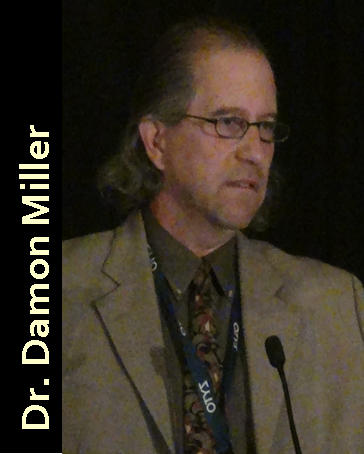 |
|
Title: Macular Degeneration, RP, Stargardt and other retinal dystrophies: How They Work, and How You Win
Objectives:
- Understand the current understanding of the genetics and epigenetic factors controlling the expression of the common retinal and macular dystrophies.
- Understand the role of the Human Adult Stem Cell System has in controlling and reversing these chronic degenerative conditions.
- Learn the strategies used by Dr. Miller to enhance the function of the Human Adult Stem Cell System to slow the progression of these retinal and macular dystrophies, and often improve vision.
|
Synopsis: Dr. Miller will present a synopsis of over 30 years of clinical experience working with thousands of people with degenerative retinal diseases like macular degeneration. The current understanding of the effectiveness of the therapies originally pioneered by Grace Halloran, Ph.D is that they enhance the Human Adult Stem Cell system, allowing repair and regeneration of even the complex tissues of the retina. The therapies used do not rely on pharmacy, and do not require stem cell injections. We will present the techniques used, which from the beginning, have been remarkably effective. Later in the development of this program a technology, microcurrent stimulation was added. This technology is not essential, but allowed us to see quicker results. We will also discuss the use of microcurrent stimulation therapies in the comprehensive treatment of these serious eye diseases.
|
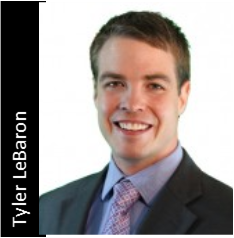 |
|
Title: Molecular Hydrogen: therapeutic potential for neurodegenerative diseases
Objectives:
- Attendees will learn the basic pharmacodynamics of hydrogen gas including its role as an antioxidant and signal modulating effects.
- Attendees will learn about the therapeutic potential of molecular hydrogen in medical and clinical applications.
- Attendees will learn the the shortcomings and weaknesses of conventional antioxidants and how hydrogen gas can over come these
|
| Synopsis:Over 500 peer-reviewed articles show molecular hydrogen (H2 gas) to be therapeutic in 150 different human disease models, and in essentially every organ of the human body. This medical gas has marked therapeutic potential in the field of disease prevention and neuroprotection[1]. H2 can easily diffuse through the blood-brain-barrier, cell membranes and intercellular compartments, not only because it is the smallest molecule in the universe, but it is also electrically neutral and hydrophobic[2]. H2 selectively scavenges the cytotoxic hydroxyl radicals (*OH)[3] without eliminating the beneficial signaling molecules (e.g. H2O2, NO*, O22-, etc.)[4]. It can also stimulate the Nrf2 pathway[5] leading to increased endogenous antioxidants including glutathione[6], superoxide dismutase, catalase, etc. [7]. Lastly, the cell modulating property of H2 affords it with remarkable anti-inflammatory[8], anti-alleragy[9], anti-apoptotic[10], and other neuroprotective benefits. |
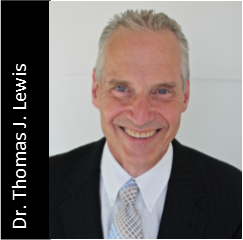 |
|
Title: The Eye and the Pathology of Alzheimer’s Disease
Objectives:
- How the eye is useful as a screening tool for Alzheimer’s and related chronic diseases.
- How eye diseases and chronic diseases are interconnected with Alzheimer’s disease.
- The role of inflammation in Alzheimer’s disease and how stopping the inflammatory blockade, at its source, can renew neurogenesis and thus, neuroregeneration.
|
| Synopsis: The eye, in particular, the retina, is an outcropping of the brain. Many eye diseases are actually systemic diseases that manifest in the eye. In this way the eye is an early biomarker for these systemic diseases including Alzheimer’s disease. Due to its transparency and “immune privilege,” the eye makes for an ideal modality to identify systemic diseases early and to monitor the efficacy of treatments. |
| |
| |